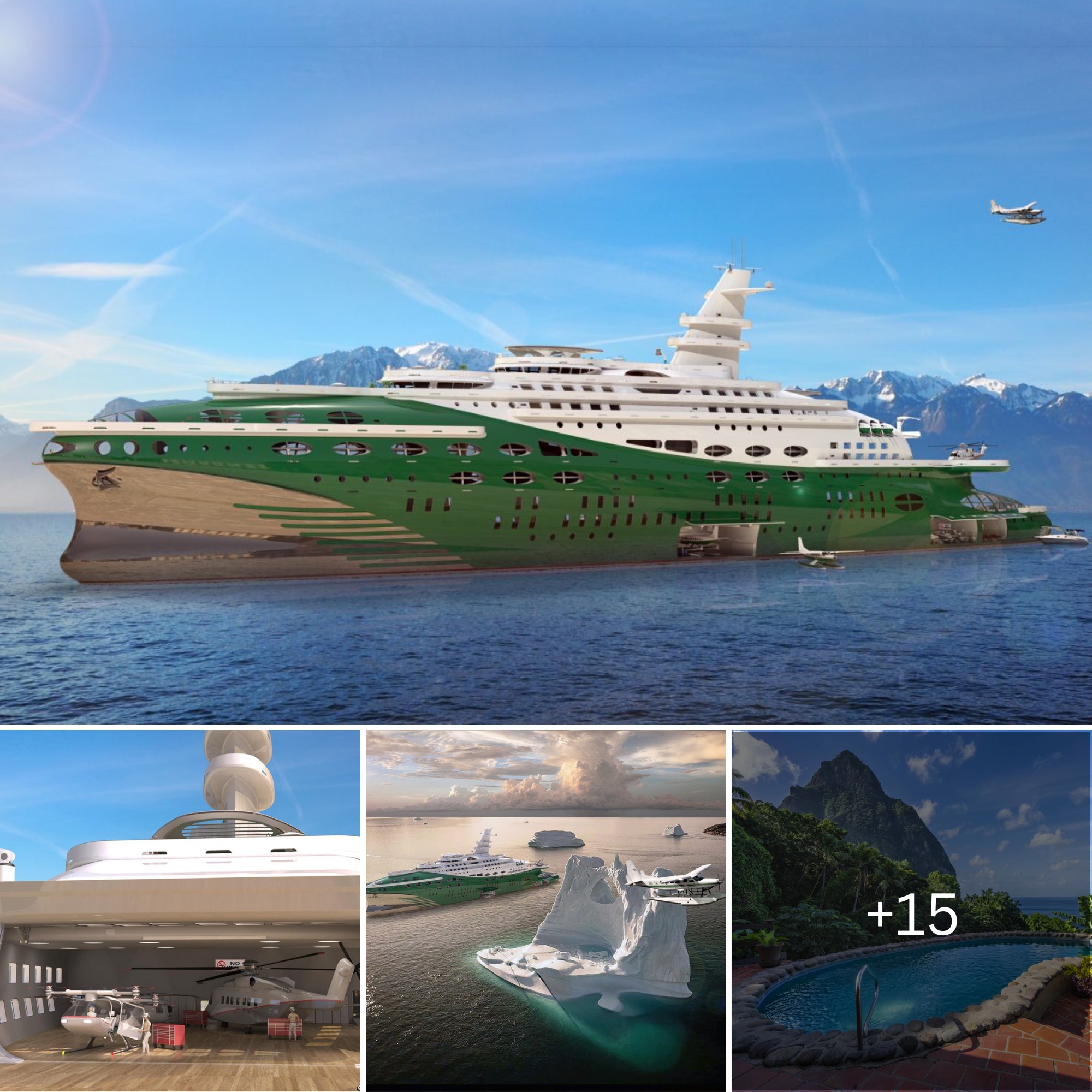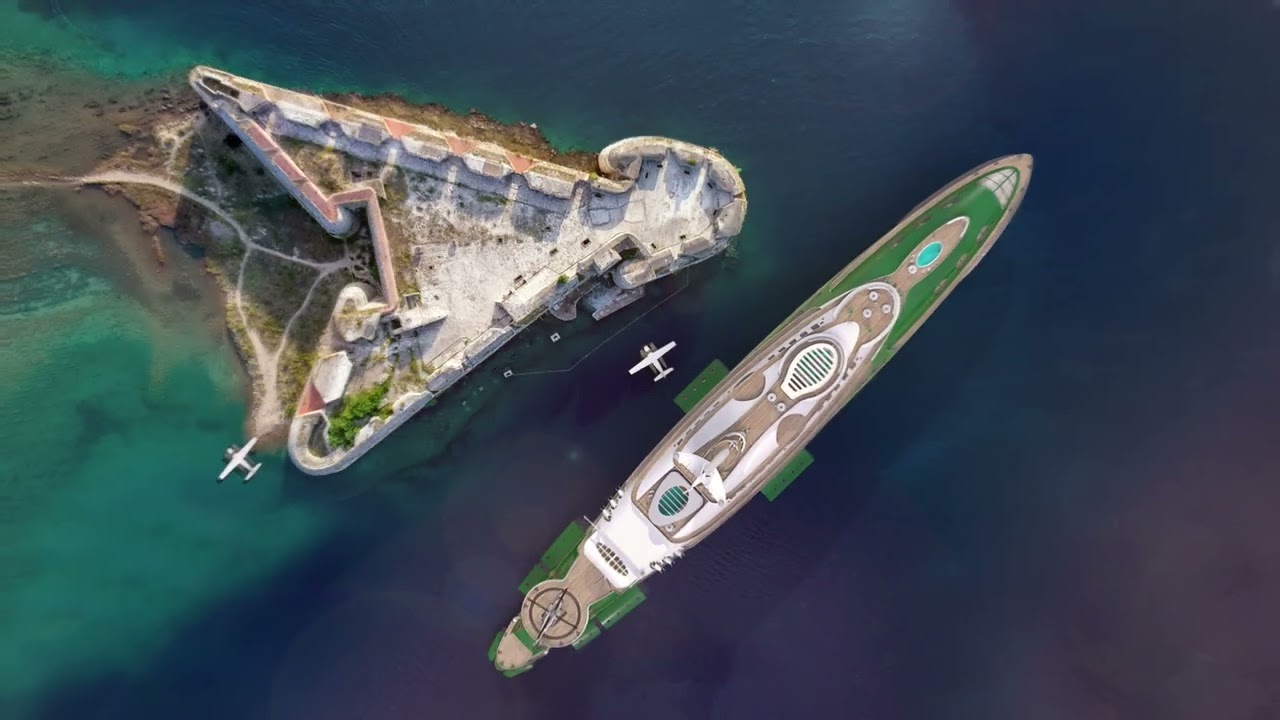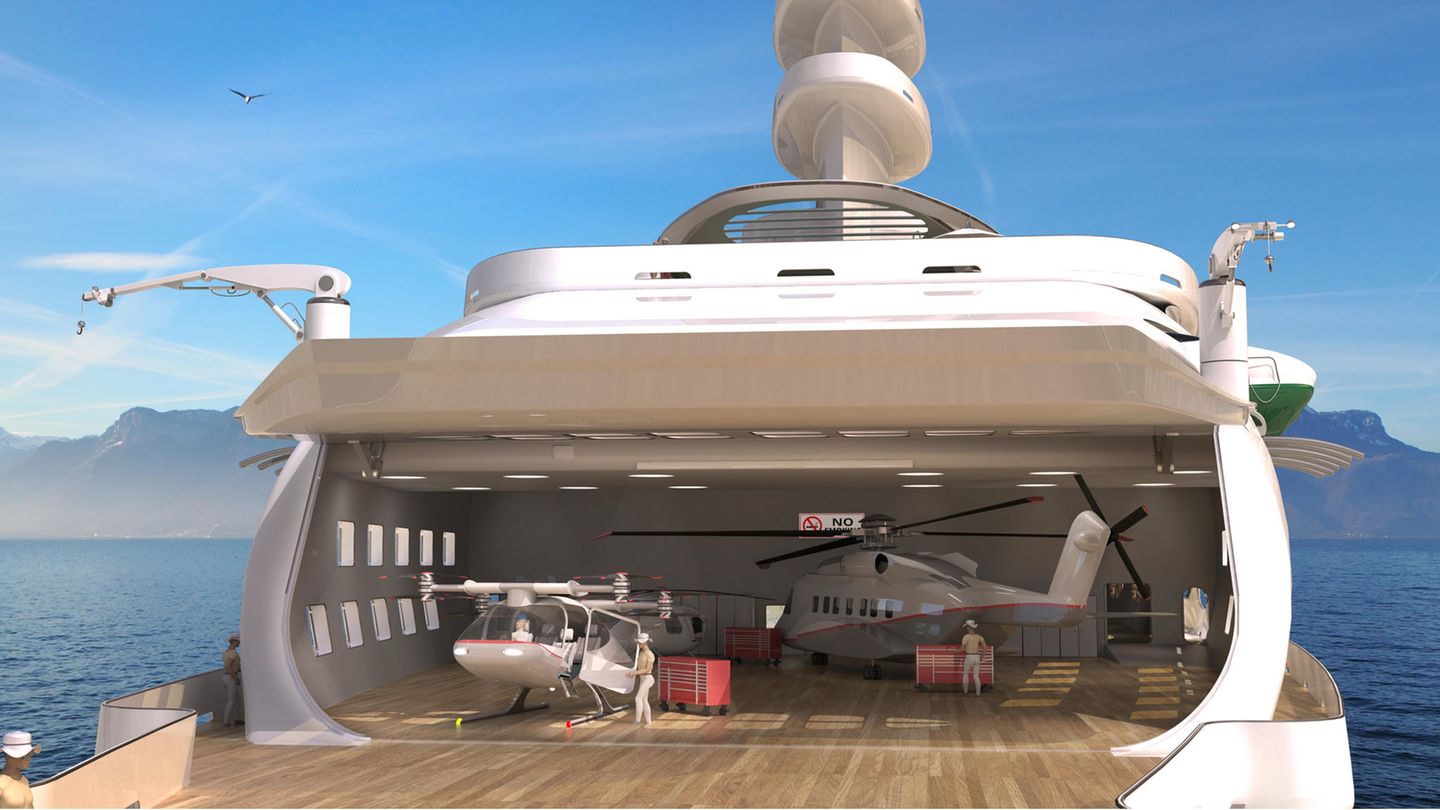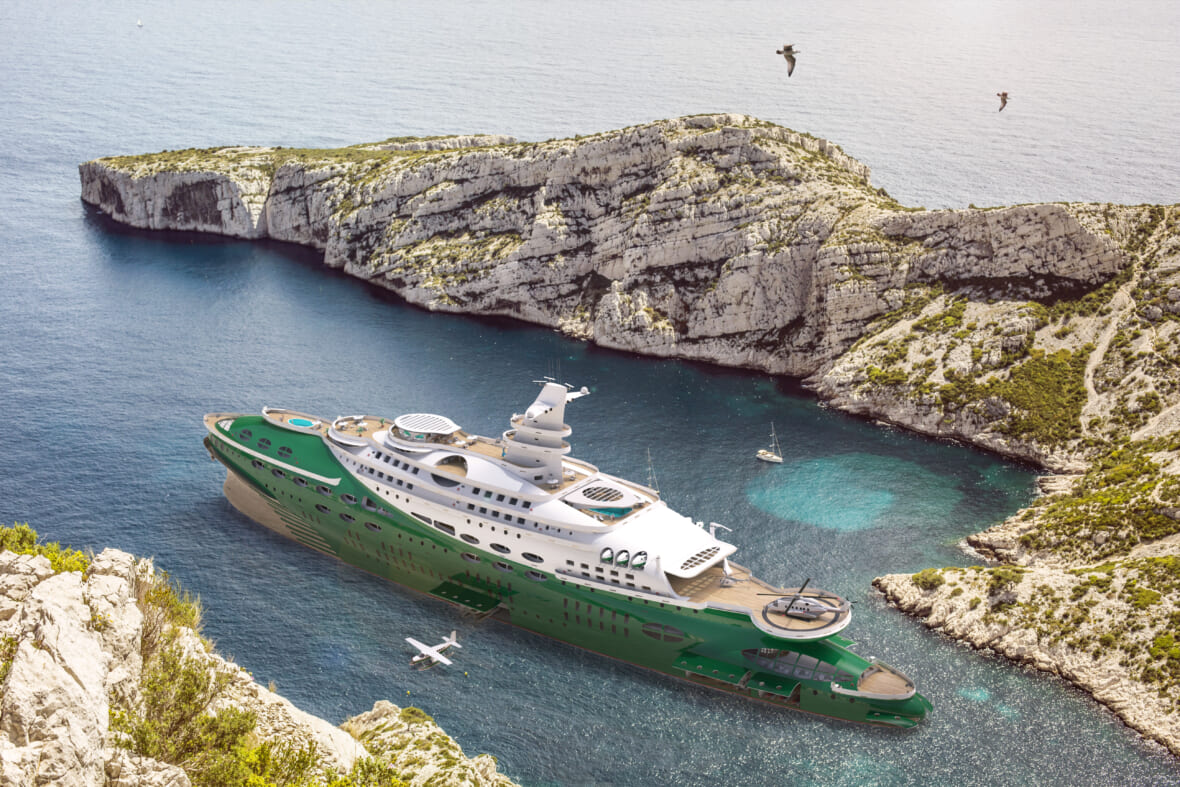
The remarkably imaginative G-Quest is designed to address humanitarian and research objectives while providing an unprecedented level of luxury.

While owning a multimillion-dollar superyacht may seem like the epitome of financial extravagance, Steve Kozloff, a California-based vehicle designer and the founder of The Goliath Series, takes it a step further by envisioning a private aircraft carrier. Kozloff, who also serves as the head designer at Nimbl Vehicles, specializes in crafting customized overland camper packages for pickup trucks.

However, it is in his capacity as the founder of The Goliath Series that Kozloff independently conceived one of the most extravagant watercraft ever imagined, surpassing even the audacious design of the 3D-printed “invisible” superyacht made of mirrors.

The G-Quest, measuring a staggering 215 meters (705 feet) in length, is intended to tackle humanitarian and research objectives while providing uncompromising luxury. The majority of the yacht’s interior space is dedicated to facilitating “oceanographic and medical research, green propulsion experimentation, and medical intervention,” as stated in the project description.

One of its most ambitious features is a 6,500-foot aircraft hangar designed to accommodate two Sikorsky S-92 VIP helicopters, various smaller helicopters, and an electric VTOL craft of Kozloff’s own design for personnel transportation. Midship, a separate hangar houses two Cessna Caravan Seaplanes, chosen for their capability to transport supplies across long distances.

The G-Quest’s range of vessels extends beyond aircraft. Kozloff has allocated garage space for six fully electric Candela hydrofoil “flying boats,” an electric ship-to-shore landing craft for vehicle and freight transport, a U-Worx Research submarine, two SUVs (including a Nimbl exploration vehicle), and three Taiga Orcas—the same model that made headlines as the “world’s first electric jet ski” in 2022.

In addition to boasting a fully equipped fleet of vehicles capable of traversing land, air, and sea, the G-Quest also offers remarkably imaginative accommodations. These include an oceanographic laboratory, medical laboratory, dive center with a compression chamber, MRI and X-ray imaging center, ophthalmology department, dentist’s suite, robotic surgery operating rooms, and 20 hospital beds.

On the luxurious side, the yacht features a spacious 3,000-square-foot owner’s suite with panoramic views at the bow, a large spa and pool on the flybridge, a basketball court above the flybridge, another pool with a shaded lounge area above the aft hangar, a dining room at the stern, and a solarium with a second dining area at the bow. Additionally, a beach club with a full bar is incorporated, although detailed interior images are not currently available.

The three upper decks can accommodate a total of 26 owner’s guests, while an operational crew of 150, including doctors, scientists, pilots, nurses, and research engineers, will be housed in undisclosed quarters.

Even the propulsion system is ambitious. Kozloff envisions rotating azimuth thrusters powered by batteries charged with “green fuels of the future,” such as hydrogen, methanol, and biodiesel.
Although the G-Quest is likely to remain a concept, with an estimated cost of $1-$1.2 billion to bring it to fruition, you can visit The Goliath Series’ website to learn more about this extraordinary project.